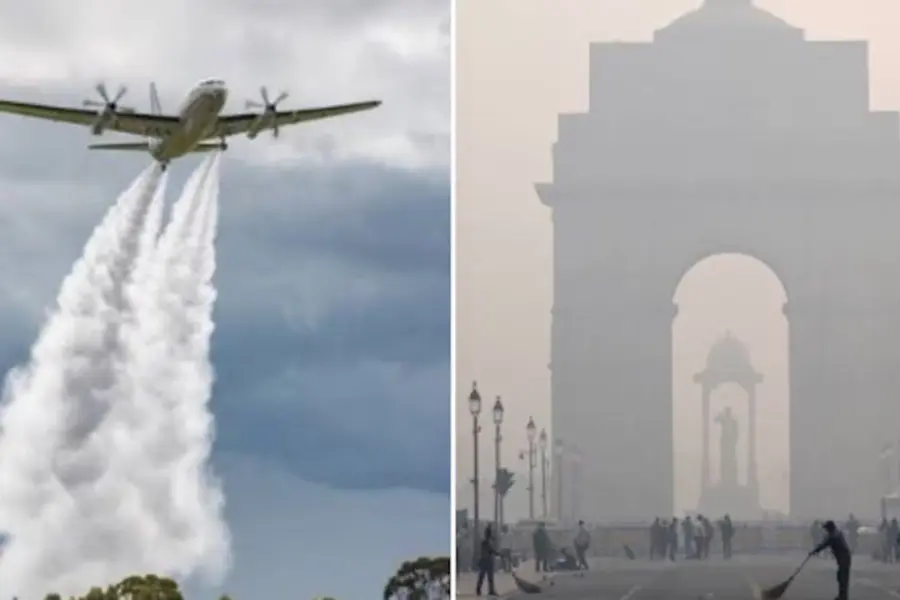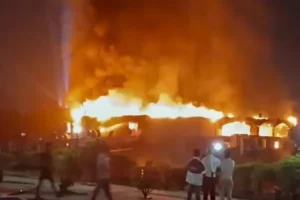Cloud Seeding in Delhi Falls Flat Amid Low Moisture Levels
thenewsbuzz October 29, 2025 5
Delhi’s highly anticipated cloud-seeding experiment to produce artificial rain to clear its contamination-filled winter smog. It did not deliver any meaningful results on Tuesday. Despite the hype, experts say the experiment was set to fail because of the city’s dreadful weather conditions. It is especially due to the low humidity in the atmosphere.
While residents of the capital were hopeful for rain to clear the grime, there was not a single drop. With that air quality remained in the “very poor to severe” category. This saga has quickly surfaced as one of the trending stories of the day. This generated speculation on whether artificial rain can actually be used to tackle pollution in Delhi.
The Research Behind Delhi’s Cloud-Seeding Experiment
With the new BJP government in Delhi, five cloud-seeding experiments, in partnership with IIT Kanpur, were organized. It costed more than ₹ 3 crore. The experiment aimed to decrease air pollution using rain to wash the air of particulates.
An aircraft operated by IIT Kanpur flew from Uttar Pradesh to Delhi to drop a solution of silver iodide—a “snow” like chemical. This was done over locations including Burari, Mayur Vihar and Karol Bagh. The idea of this process in uncomplicated: silver iodide acts as a “nucleus” for water droplets to coalesce. Eventually achieving sufficient density to fall as rain.
However, even following two attempts spaced three hours apart, there was no rainfall in any portion of Delhi.
Reasons for the Failed Experiment
Experts from the India Meteorological Department (IMD) and IIT Kanpur confirmed that the cloud moisture was only 10-15%, while cloud seeding requires at least 50-60% of humidity to succeed.
Despite the presence of a gloomy sky, Delhi’s parched winter conditions were hardly suitable for these experiments.
Dr. Akshay Deoras, a research scientist at the University of Reading, explained that cloud seeding is only successful when a western disturbance is occurring – i.e. rain bearing clouds are present.
“The presence of clouds does not necessarily indicate rain.” “In the winter, the air does not have the necessary humidity for cloud seeding to be successful,” he explained.
In conclusion, the cloud-seeding in Delhi relied more on hope than science, and experts say it was doomed to fail from the beginning.
Expensive but Temporary Solution
Although environmentalists say artificial rain did work, it would still be a temporary solution to pollution. Past experiences, in India and abroad, show that air quality usually deteriorates again within 24-48 hours of such rain.
Delhi’s latest attempt was not the first for India when it comes to cloud seeding. In 2009, Mumbai embarked on a similar experiment, spending over ₹25 crore to induce rain over its catchment lakes — but after several attempts, only scanty drizzle was induced. Andhra Pradesh undertook cloud-seeding operations between 2008 and 2011 but they were unsuccessful and generated political controversy.
These unsuccessful attempts demonstrate that while the technology shows promise, it is highly dependent on specific atmospheric conditions — which rarely exist during dry winter months in Delhi.
Lessons for Delhi in the Future
There is no way out of the air quality crisis in Delhi from short term fixes like inducing rain. Experts say the best possibility is for the city to create a long-term plan that aims to manage and reduce emissions from vehicles, factories and crop burning and not worry about the uncertain weather modification.
No doubt, the cloud-seeding effort today is a significant trending news today. However, it also leaves a larger question about the necessity for a sustained policy commitment, sustainable city building, and public education that is smarter and long-term, rather than focusing on an expensive “fix” (which unsuccessfully engages cloud-seeding experiments) with little actual value.
The toxic waste haze hangs over the capital, and citizens and their representatives continue to mull over the unanswered question: will we continue to chase artificial rain, or start investing in real terms to address the air quality for the long haul?







greek gulet cruise Aria M. The ATV ride was exciting and the guide took us to hidden viewpoints. https://www.dare2exploretheworld.com/tour-details.php?TourName=8-days-special-wonderful-father-day-tour-turkey
fbeams
wqytry
I have to say, dream86bet has a certain charm. It’s not the fanciest site, but it’s reliable and the odds are pretty good. I’ve made some decent bets here and never had any issues. Give it a shot if you’re looking for a straightforward experience. Look here: dream86bet
Yo, heard about 55wincom from a buddy. Thinkin’ of checkin’ it out. Heard they got some decent odds. Wish me luck! Gonna give 55wincom a try!